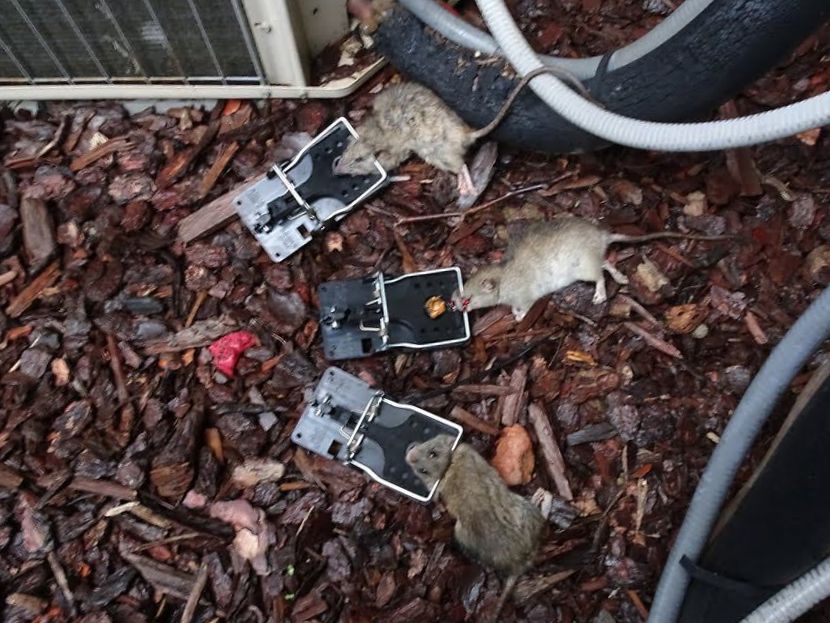
When looking for a rat trap, you'll want one that covers all your bases:
1 – it traps the rat.
2 – it keeps in line with the law.
3 – it doesn't cause any unnecessary suffering.
The last one might not even be that important to many property owners, but it should be a big factor; you SHOULD look for the most humane approach to rat removal, even if that humane approach does appear to be extermination.
Glue Traps
Glue traps DO trap a rat, but they do not kill it. The rat becomes stuck to the very strong glue, and will either die stuck there, or chew through a limb to try and break free. It might even find itself vulnerable to attacks from passing predators, such as your cat, which might then get stuck to the glue strip itself.
You cannot place glue strips down in places that are accessible to cats, dogs, other household pets, or small children. (We even know a few adults who can't be trusted with them … )
In some states it is illegal to use glue traps. It is considered to be one of the LEAST humane approach, usually causing a long, painful, strung-out death. If the animal is still alive when you find it attacked to the glue strip, it is YOUR responsibility to end the animal's suffering.
In short, glue traps DO trap the rat, DON'T always comply with local laws, and DO cause unnecessary suffering.
Live Traps
There are quite a few variety of "live trap" for rats now — a trap where you are expected to released the animal after it has been captured.
Rats are usually quite wary of live cage traps and plastic boxes, and certain materials can be chewed through if they are not emptied quickly enough. Live traps will also need to be checked more regularly than other trap types, excluding glue strips.
Sadly, trap-and-release methods are not advised for rats. They are social animals who are used to living within a large group. If you take just one rat from that group, or even a few rats, they will not be at their peak, making them really vulnerable when you then release them back into the wild. They also have the disadvantage of not knowing the habitat in which you have released them, not knowing where to find food or water, and not having a source of shelter to protect them from rain/heat/predators.
Trap-and-release methods also are not permitted in some states — you should check the laws in your area. They are known to pose a problem for other businesses and homes too, if you release the rodent into an environment close to them.
Finally, live cage traps and other types of "humane" traps for rats allow the rats to learn and get smarter. Trap-shy rats are ones who will not go near any kind of trap, more than likely because they have already made that mistake once. They're not stupid animals, although we do like to think they are.
Snap Traps
These are the most commonly used types of rat trap, designed to trap and kill in one swift motion. Although it definitely results in the death of the rodent, it is a quick and painless death in most cases. The rat is usually killed instantly, without feeling pain. In a world where rats are taking over, we do need to keep their numbers down and, sadly, this will mean exterminating them in those areas where numbers are high.
The alternative is to live alongside these rodents and watch as they spread disease and chew our homes down, which they will do if given the opportunity.
We can't tell you which type of rat trap to choose, but we can advise you. Snap traps will solve the problem when they are used correctly and used at the same time as you seal up the holes that let the rodents in. Glue traps might land you in hot water with the law if you live in an area in which you are not permitted to use them, and live cage traps can lead to super smart rats who then can't be trapped at all.
Go back to the pestcontrolrat.com home page.
Copyright 2021 - pestcontrolrat.com
Nationwide Rat Control Services